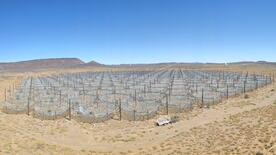Detailed measurements of 21-cm emission from neutral Hydrogen during the Epoch of Reionization will eventually enable us to tomographically map this relatively unconstrained cosmic era. Furthermore, post-reionization measurements offer an independent probe of the baryon acoustic oscillation scale, ultimately constraining the dark energy equation of state. A measurement of the 21-cm power spectrum using radio interferometers is a critical scientific target for understanding both of these eras. However, such precision experiments are burdened by strong systematic effects related to astrophysical and instrumental modeling. Additionally, radio measurements are subject to corruption from anthropogenic radio signals (RFI).
In this talk, I introduce the role of the 21-cm emission line as a cosmological probe, as well as the basics about how it is measured using radio interferometers. I then discuss each of the aforementioned challenges with a primary focus on instrumental modeling and RFI effects. I introduce a Bayesian jackknife framework and show how I used it for anomaly detection and cross-calibrating measurements from multiple instruments. I then present my development of a method for data-driven modeling of the electromagnetic response of radio antennas. This method is in service of a large Bayesian inference pipeline intended to simultaneously incorporate all astrophysical and instrumental uncertainties into the power spectrum measurement. Finally, I discuss my analysis of a large dataset, where we identify the observational signature of RFI in the 21-cm power spectrum, culminating in a power spectrum upper limit.
Host: Laura Newburgh


